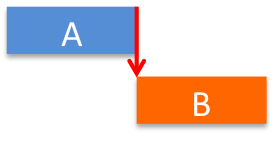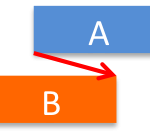In project managing your digital transformation there are two types of ‘events’: Those you have planned for and those that simply ‘happen’ to your project.
The known
The know events are part of the mise-en-place of project management. To meet your predefined objectives (vision and strategy) and prove your hypothesis, you should start with some basic ingredients:
- a manageable scope (e.g your minimum viable product)
- a realistic time to deliver the first results and subsequent heartbeat of evaluations
- an equipped team (either fully committed or appropriately supporting)
- an available budget to cover the cost of your resources
Scope, time and resources represent your known ingredients. They are part of your realistic planning.
The unknown
Of course… there-will-be-drama.
Like in any project with a high enough ambition, dependancies get overlooked, people might drop out leaving gaps in expertise and manpower and timing might change due to external factors. It is for these unforeseen factors you will need a strong governance to mitigate the risks and avoid derailing your initial plan.
Insist on discipline while allowing for evolution & innovation
Discipline first!
There are many school of thought on how to govern complex projects and transitions. It does not have to be complicated though, although it needs a healthy discipline. These three tools are key:
- Manage your known resources, roles and responsibilities in a responsibility-assignment-matrix (RACI)
- Manage the known critical path and dependancies in interlocked time chart (Gantt)
- Manage the unknown events in the risk-and-mitigation-matrix
RACI
The RACI matrix has two angles:
- the actions, deliverables and decision items
- the roles mapped aganinst the actions
In a medium sized project plan, each task that takes substantial time (e.g. more than 4 hours to complete) or has a critical dependency with another task on the RACI (e.g. a decsion or mile stone delivery).
Gantt
The Gantt-chart represents your timing. How has the project been planned in time, and how do your actual deliveries meet that schedule? The delay (or contingency when working ahead of schedule) is clearly visible in order to be communicated and managed.
Some delays will have a direct impact on future deliveries. These are identified via three types of dependencies which i will try to illustrate by example of building a road:
buy land > excavate land > asphalt laid > line painting
1: the finish-to-start dependency
Predecessor must finish before Successor can start.

(e.g. land must be purchased before excavating can start)
2: the start-to-start dependency
Predecessor must start before Successor can start.

(e.g. road excavating must start before asphalt can be laid)
3: the finish-to-finish dependency
Predecessor must finish before Successor can finish.

(e.g. laying asphalt must be complete before line painting can be completed.
4: start-to-finish dependency
(e.g. Predecessor must start before Successor can finish.

(road excavating must start before line painting can be completed)
Further reading:
https://www.ganttexcel.com/documentation/tasks/task-dependencies/
Risk matrix
The risk and mitigation matrix is a tool to identify and classify risks to the project delivery. Typically ‘unknowns’ that emerged or known dependencies that have not delivered in time. Mapped risks are qualified on impact and likelihood. Any actions or escalations are listed as well.
The matrix is the focus point for updates and steering committees in which any escalations are discussed and actioned.
Business readiness dashboard
When managing a complex environment with many stakeholders (and often many different agendas and definitions-of-success) there might be a fourth helpful tool: the business readiness dashboard.
The business readiness dashboard offers you an overview to gauge and monitor the status of your enablers. Access to the right expertise for quality assurance, technological enablers and a proper onboarding in which you clearly state whom shall be involved and what is expected from them in order to bring the project to completion or establish a routine that has an open ending.
The dashboard is a simple table, identifying all the required elements, their definition of ‘good’ and the people or roles responsible for delivering on them and qualifying their status.
Ideally your business readiness dashboard shows ‘green’ on all accounts before you start the project, but things can change. Resources might drop out, or new insights surface that require a change to what you consider a critical enabler for your project to be a success.
These four assets, RACI, Gantt, risk matrix and readiness-dashboard form the core of your periodical status updates to your stakeholders. Together with a demonstration of your achievements (e.g. prototypes or even tangible business results) these elements makeup for a concise, yet effective communication on your progress.
But how about innovation?
To deal with the uncertainty of innovation your product management methodology needs to recognise where to invest your time and resources in and what to drop before it sucks you in.
An example of a tested methodology can be found here:


